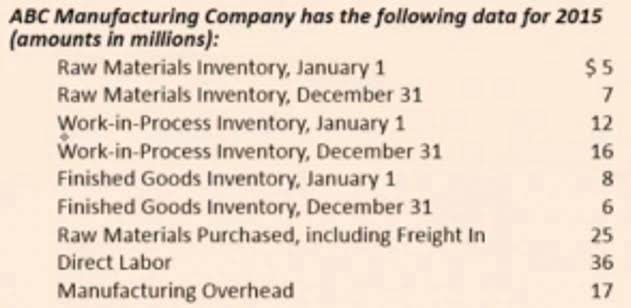
This way, you can easily look back over any pay period and be able to see the total amount of accrued wages, gross pay, and any other payroll transactions. Yes, accrued payroll is considered a current liability as it represents money owed to employees for work done but not yet paid by the company. Typically, the company will settle the amount within the next accounting period.
- Check the employment contract, company handbook or intranet to see what the rules say.
- Whether or not an amount (or some part of it) needs to be accrued depends on a number of circumstances.
- This is why accuracy in financial records is necessary, ensuring audit readiness and compliance.
- Accrual accounting is one of the generally accepted accounting practices (GAAP).
Paul would not qualify as an irregular hours worker if his contracted hours are fixed during both week 1 and week 2. Given that Paul does not work overtime, it is not the case that his hours worked are wholly or mostly variable. Instead, Paul’s hours are fixed (just worked in a rotating shift pattern).
How to record a payroll journal entry in 5 steps
If something goes wrong, adjusting entries can become a huge chore—you’ll have to dig through potentially hundreds of records. So, if clients pay with a check or credit card, accrual accounting allows business owners to record the amount as money in. Under the Employment Rights Act 1996, the holiday pay reference period starts from the last whole week ending on or before the first day of the period of leave. This will typically be a week from Sunday to Saturday, but it could end on another day of the week if a worker is paid on a weekly basis.
- Salaries, wages, and other compensation employees earn for a specific period that haven’t been paid by the company.
- For payroll accruals, bonuses are calculated by determining the projected annual bonus amount and dividing it by the number of months in the year.
- Lastly, be sure to add the total amount that you offer your employees in monthly paid leave to your accrued payroll costs.
- In accrual accounting, you use an adjusting entry to record expenses that you incurred during the period but haven’t paid for yet.
- Visit holidays, time off, sick leave, maternity and paternity leave for more information.
- Since you haven’t paid for those days yet, you can’t count them as a payroll expense.
It’s essential to account for payroll taxes in order to remain in compliance with the ATO. It’s also important to mark paid leave under accrued payroll in case an employee decides to leave the company. In that case, you will likely owe the employee the value of their unused paid leave in cash as part of their final pay cheque. Determining every employee’s payroll accrual without the help of professional software tends to be a long, tedious process.
Tips for Recording Payroll Accrual
The amount of pay that a worker receives for the holiday they take depends on the number of hours they work and how they are paid for those hours. Pay received by a worker while they are on holiday should reflect what they would have earned if they had been at work and working. Sharon accrued 1 hour of statutory holiday entitlement while she was off sick. First period of maternity or family related leave or period off sick (19 weeks of shared parental leave for Sharon). Her employer will need to calculate her statutory holiday entitlement after each of these leave periods.
- When considering variables like overtime and sick days, precisely estimating accrued payroll can be challenging.
- Payroll accruals capture the payroll costs between the last payday and the last calendar day of each month.
- Where this gives less than 52 weeks to take into account (that is, where the worker has many weeks without any remuneration), the reference period is shortened to that lower number of weeks.
- New, trends and analysis, as well as breaking news alerts, to help HR professionals do their jobs better each business day.
- This includes part-year workers who may have fixed hours, for example, teaching assistants who only work during term time, and who are paid only when working.
There are multiple components to understand and a step-by-step process to follow, similar to the intricate mechanisms that work together to keep a ship sailing. The initial procedure for calculating accrued payroll is to ascertain the pay period. In the bustling marketplaces of our global economy, the lifeblood of any business lies in its ability to accurately manage financials. One key accrual payroll element that makes the heart of business beat with precision is understanding “what is accrued payroll”. Imagine a ship sailing across vast financial oceans, the captain must accurately navigate payroll waters to ensure a smooth journey. So, let’s set sail on this voyage to comprehend what is accrued payroll, an integral component of accurate bookkeeping and financial management.
Employee Messaging
Now, even though you haven’t yet paid your team for their efforts that month, from an accounting standpoint, you’ve incurred these salary expenses in June. The payroll accrual is the amounts a company owes for work done by employees, but the amounts have not yet been recorded in the company’s general ledger accounts. Record employer-paid payroll taxes, such as the employer’s portion of FICA, FUTA, and SUTA.
The benefits of PTO are that it promotes a flexible approach to time off by combining vacation, sick and personal leave. If your employee has earned any extra wages apart from their regular hourly rate, be sure to add that to the total. Or, if you’re new to managing employees, read up on how to do payroll. Salaried employees, meanwhile, are typically provided with a predetermined amount of paid time off. Regardless of the business’s paid time off policy, HR is responsible for the recordkeeping and monitoring of its employees’ accrued time. To better understand which work days are unpaid, let’s use an example of what a bi-weekly pay period looks like in January 2023.
Debits vs. credits in payroll accounting: What’s the difference?
Workers who leave employment have their annual leave pro-rated based on the time that they spent in work as a proportion of the year. This is calculated based on calendar days in employment, not days spent at work. If a worker leaves their job part-way through a leave year, a calculation should be completed to check the worker has received the statutory minimum holiday entitlement to which they are entitled. It’s smart to keep a close eye on the payroll expenses that have accrued over a pay period, even if the cheques haven’t gone out yet.

The GENESIS’s powerful reporting system produces valuable management reports, which help control overpayment of employees and ensure proper distribution of labor costs. GENESIS’s reports also help you avoid unauthorized overtime, track employee status, track benefit administration, control departmental costs, monitor staffing, perform job costing, and much more. Cash Out In December of each year, employees will receive the option to elect to cash out a portion of their PTO earned in the following calendar year. Employees may cash out up to a maximum of 80 hours providing that at least 40 hours of leave remain to cover unanticipated absences. The cash out will be paid at 80 percent of the employee’s current base rate of pay. As the employer, payroll tax expenses and the withholding amounts are your responsibility.
On the other hand, the downward directing arrow of shareholder’s equity signifies decreased profit. The wages are an expense for a company and, therefore, will decrease the profit. Let’s take the example of the same employee Leslie and her tax deductions. Both are recognized in the financial statements for the period incurred, not necessarily when paid. This is why accuracy in financial records is necessary, ensuring audit readiness and compliance. Manual processing in Excel is often susceptible to errors, so efficient finance teams rely on automation and integration with other business systems for enhanced efficiency.
